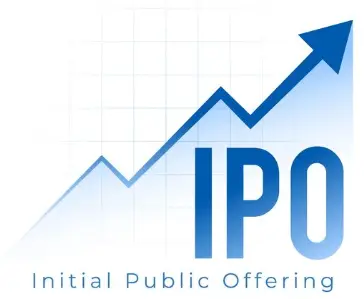Global Financial Markets: Navigating Volatility and Portfolio Outflows
In recent months, global financial markets have experienced significant volatility, raising concerns among investors and analysts alike. One of the most striking indicators of this instability is the portfolio outflow recorded in the current fiscal year, which stands at a staggering -$2.1 billion. This figure starkly contrasts with the inflow of $35.5 billion seen in the previous fiscal years of FY23 and FY24, and it follows a similar trend from FY22, which witnessed an outflow of approximately $17.9 billion. The fluctuations in portfolio inflows and outflows over the past few years highlight a turbulent landscape for investors navigating these uncertain waters.
The Rise and Fall of Smaller Enterprises
Amidst this backdrop, the debt interlinkage of smaller enterprises that recently debuted on stock exchanges has raised red flags. Many of these companies, which enjoyed inflated valuations throughout the previous year, are now facing scrutiny. A notable example is an infrastructure EPC (Engineering, Procurement, and Construction) company that, despite boasting a robust order book, has recently been downgraded to junk status by various rating agencies. Concerns about potential defaults on bond repayments and a significant proportion of shares pledged by promoters have brought to light questionable practices within this sector. As stock prices plummet, these smaller enterprises are at risk of being overwhelmed by high doses of sanctioned credit facilities, leading to a precarious financial situation.
The Shadow Banking Sector’s Role
The shadow banking sector, known for its unrestricted issuance of private credit, further complicates the financial landscape. This sector has the agility to create customized structured products, often prioritizing a firm’s intrinsic value as a secondary concern. The lack of regulation in this area poses risks not only to the companies involved but also to the broader financial system. As these entities continue to operate with minimal oversight, the potential for systemic issues grows, particularly in a volatile market environment.
Regulatory Challenges and Market Dynamics
In response to these challenges, the Securities and Exchange Board of India (SEBI) has been working diligently to establish regulatory frameworks that can mitigate risks in the financial markets. However, the sheer volume and complexity of capital market activities, driven largely by algorithmic and quantitative trading, make this task increasingly difficult. India, accounting for approximately 80% of global futures and options volumes, has seen a surge in retail investor participation. Unfortunately, many of these investors have suffered significant losses, prompting calls for more robust regulations to protect them from the pitfalls of speculative trading.
Critics of regulatory efforts often draw parallels to historical events, such as the bucket shop practices in the United States during the early 1900s, which ensnared average investors and contributed to the Great Crash of 1929. These historical lessons underscore the importance of maintaining a balanced approach to regulation that fosters market integrity while allowing for healthy growth.
The Long-Term Perspective on Stock Markets
Despite the current turmoil, stock markets are fundamentally long-term weighing machines that reward patient investors. In the short term, they often resemble voting machines, reflecting the whims of market sentiment. Historical data suggests that retail investors tend to realize the least profits during periods of market mania, while suffering the most significant losses. This trend appears to be repeating itself today, particularly among smaller listed companies that operate outside the purview of major analysts.
The capital markets in India have seen a remarkable increase in primary market activities, with the country accounting for over a quarter of global IPOs in 2024. The two SME platforms, NSE Emerge and BSE SME, have welcomed a notable increase in listings, with 243 SMEs debuting in 2024—a 36% rise from the previous year. However, the total equity raised by these smaller firms remains modest compared to their mainboard counterparts, highlighting the challenges they face in scaling their operations.
The Debt-Equity Dilemma
While equity financing has traditionally been a favored route for raising capital, companies often require substantial debt to fuel their growth ambitions. This creates a catch-22 situation where institutions may overlook the risks associated with a rapidly rising equity capitalization, inadvertently pushing up the debt-to-equity ratio. The inability of smaller firms to secure debt through capital markets forces them to rely increasingly on the banking system post-listing, fostering a short-term mindset focused on meeting quarterly performance metrics rather than long-term value creation.
The Need for Holistic Solutions
The prevalence of unsecured funding from less regulated intermediaries poses another significant challenge. High levels of subordinate debt can create a false sense of security for enterprises, leading to an elevated risk appetite that may backfire during turbulent times. Coupled with patchy corporate governance practices, intense competition among financial intermediaries, and the unrestricted pledging of promoters’ shares, these factors contribute to a vicious cycle that undermines the stability of the financial system.
To address these issues, a holistic institutional mechanism is necessary to rectify existing fallacies and foster long-term wealth creation. This approach should prioritize both equity and equality, ensuring that the financial markets operate in a manner that benefits all stakeholders.
Conclusion
As global financial markets continue to grapple with volatility and uncertainty, the lessons learned from recent trends in portfolio outflows, the challenges faced by smaller enterprises, and the role of regulatory frameworks will be crucial in shaping the future landscape. By fostering a balanced approach to regulation and encouraging responsible financial practices, stakeholders can work towards creating a more resilient and equitable financial ecosystem.

